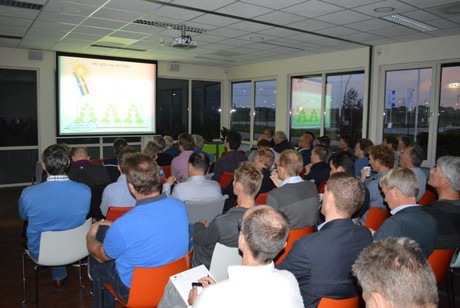
Diffuse glass: the basics and the consequences
The theme evening was organised by the 30 year old ‘Organisation of Tuinbouwadviseurs en Onderzoekers’. The event was very well attended by growers and greenhouse builders. The lectures answered three questions: What is the influence of diffuse glass on the crop, what is diffuse glass and what does condensation on the glass do to the transmission of light.
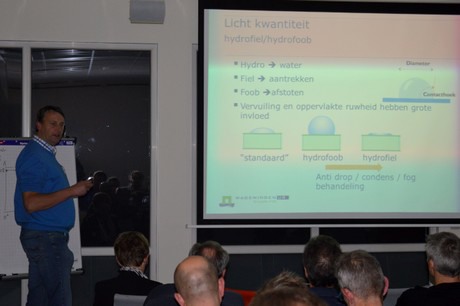
Frank Kempkes about the complex relation between diffuse glass, transmission and condensation
More production and faster cultivation
The story of crop researcher Jan Janse shows that diffuse light results in more and faster production. In almost all crops and all conditions diffuse glass leads to a better distribution of light in the crop. Because of that light will also reach the lowest leaves; resulting in more photosynthesis and more generative growth.
Silke Hemming, researcher at the University of Wageningen, covered the physical aspects. "When light enters the glass, what happens with the beam of light are three things. One part goes directly through, one part is reflected and one part is absorbed. Tinkering with the components and the coating, can decrease the reflection and absorption. An anti-reflection coating will give a few percentage more transmission. The same goes for glass containing less iron. Finally the glass surface can be influenced, resulting in a high or low haze - the extent in which light becomes diffuse."
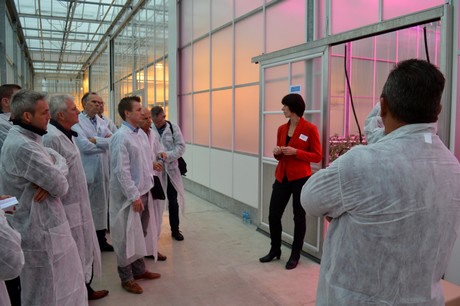
Anja Dieleman talking about research with tomato under far-red light and a diffuse rooftop.
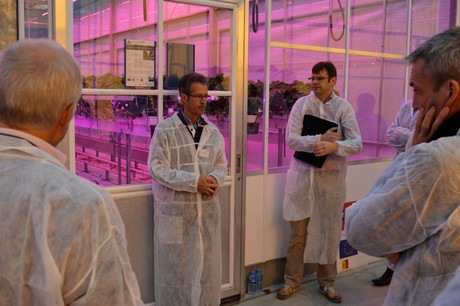
Jan Janse talking about taste and vitamin C in strawberries under artificial LED lighting.
Condensation
"When the glass is tested, this is done under laboratory conditions. In practice these conditions are different, especially concerning moisture. Condensation changes the transmission of light. This is because diffuse glass, coated or not, is no longer neutral like a standard glass, but is either wetting (hydrophilic) or non-wetting (hydrophobic). In other words: you get more drop formation or a condensation that looks more like a mirror."
Kempkes is busy with his research on the effect of condensation on diffuse glass on the light transmission, although he recognizes that it is very difficult. "In practise it proves to be more intractable than in a laboratory. There are too many variables, the conditions are continually changing. The right method for careful examination is lacking. It is therefore vital to find a new measuring protocol."
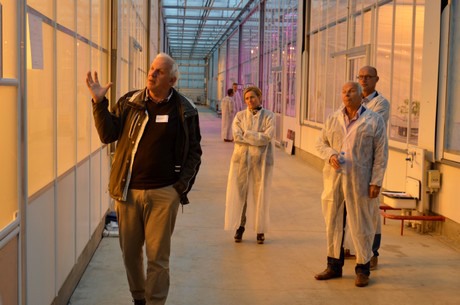
Arie de Gelder talked about a trial in which different amounts of tomato leaves were cut away and subsequently examined how this affected the generative growth.
